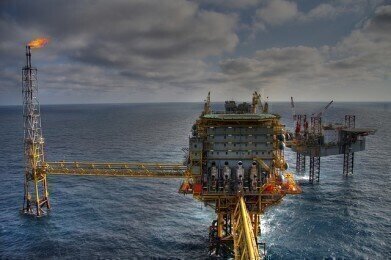Measurement and Testing
What Happens to Unused Oil Rigs?
May 19 2017
Designed to withstand wild weather, relentless waves and anything else Mother Nature can throw at them, oil rigs are built to last. Suspended on the Jeanne D'Arc Basin in the Atlantic Ocean, Canada’s Hibernia platform steps up as the heaviest oil rig on the planet. It’s made up of a 37,000 tonne integrated topside facility, mounted on a 600,000 tone gravity base structure. Yes, it’s colossal.
But what happens when massive offshore structures like Hibernia are no longer operational? As logistically complex as it sounds, they’re transported to an oil rig graveyard, aka a breaker’s yard. Here, they’re deconstructed, and ideally recycled. Often, this involves travelling thousands of miles across oceans, and even continents.
Responsible recycling
While scale, mass and fortitude are redeeming qualities when an oil rig is functional, they can raise all sorts of issues when an oil rig is decommissioned. As a result, some owners attempt to sidestep the issue. In the 1990s, energy giant Shell decommissioned its 14,500 tonne North Sea oil platform, Brent Spa. In a bid to cut costs, it announced plans to sink the monolith in the Atlantic Ocean. Of course, Green Peace quickly got wind of the proposal and staged an oil rig occupation, as well as a national protest campaign that saw Shell sales slump by 50%. In response, Shell was forced to dismantle and dispose of the platform on dry land, which sparked a new era for responsible decommissions.
Today, a 15-nation protocol known as the Convention for the Protection of the Marine Environment of the North East Atlantic (aka Ospar) serves as a legacy of the scandal. Introduced to protect fragile marine ecosystems, it demands that oil rigs be removed and returned to shore for recycling. If the rig’s support structure weighs less than 10,000 tonnes it must be completely removed, however if it’s heavier or was built prior to 1999 there are some exceptions.
Decommissioning giants
Needless to say, it’s no easy job. To put it into perspective, the recent decommissioning of nine Norwegian rigs from the Ekofisk field called for the removal of 113,500 tonnes of steel. According to the Royal Academy of Engineering, this equates to the weight of 54 London Eyes. Shell’s structures are just as dense, with decommissioning manager Duncan Manning stressing that its rigs weight up to 300,000 tonnes.
As well as a basic dismantle and disposal, some eco warriors are getting creative with repurposing retired oil rigs. One architectural firm is reimagining oil rigs as luxury floating eco resorts, while another repurposes them as spacious city apartments. A Texas based oil rig has been successfully converted into a museum, while another now serves as an exclusive dive resort in Borneo.
Oil and gas may be a lucrative industry, but as the decommissioning process reveals, it’s laden with complexities. ‘How to Prevent Process Analytical System Failures’ explores the issues that arise in the pharmaceutical sphere, and how the new FDA guidelines are helping to augment control over the multifaceted production process.
Digital Edition
PIN 25.1 Feb/March
March 2024
In This Edition Safety - The technology behind the ION Science Tiger XT - Safety with ammonia and LOHCs as hydrogen carriers Analytical Instrumentation - Discussion on new tribology te...
View all digital editions
Events
Apr 22 2024 Hannover, Germany
Apr 22 2024 Marrakech, Morroco
Apr 22 2024 Muscat, Oman
Apr 22 2024 Rotterdam, Netherlands
Apr 23 2024 Singapore


















